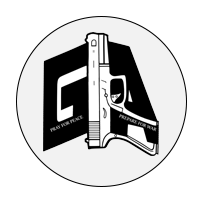Do you feel prepared for the first day of your firearms training course? Embarking on this journey requires the right mindset, preparation, and some key essentials. Firearms training can be a blend of excitement and nerves, and being adequately prepared can make your experience both enjoyable and beneficial. Let’s explore the steps you can take to get ready for this important day and make the most out of your training.
Understanding the Basics
Before you step into the training range, familiarize yourself with the fundamental concepts of firearms safety. Think of these as your guiding principles, which are essential regardless of your skill level.
Safety First
Ensure you understand the basic safety rules. This includes treating every firearm as if it is loaded, always pointing it in a safe direction, keeping your finger off the trigger until ready to shoot, and being aware of your target and what is beyond it. These principles not only prevent accidents but also establish a respectful environment for everyone on the range.
Terminology and Types
Gaining familiarity with key terminologies and the different types of firearms can enhance your understanding. Whether it’s pistols, rifles, or shotguns, each type has distinct characteristics and uses. Research or consult with an expert to grasp these fundamentals, so you don’t feel overwhelmed during your training.
Gathering the Right Gear
The right equipment can significantly influence your training experience. Organizing your gear in advance ensures that you’re ready for any scenario that arises.
Firearms and Accessories
Having a firearm that suits you is important. Make sure your firearm is in good working condition. Additionally, invest in quality accessories such as holsters, magazines, and cleaning kits. These accessories make handling and maintaining your firearm easier.
Safety Equipment
Protective gear is non-negotiable. This includes ear protection, eye protection, and suitable clothing that can withstand the elements of a shooting range. Ensuring you have the proper safety gear protects you and enhances your focus during training.
| Item | Purpose |
|---|---|
| Ear Protection | Shields ears from loud gunshot noises |
| Eye Protection | Guards against debris and sudden flashes |
| Range-Appropriate Clothing | Offers comfort and protection |
Ensure all your equipment is organized and easy to access. You wouldn’t want to scramble around looking for essentials right before getting started.
Preparing Mentally and Physically
Both your body and mind need to be in top shape for firearms training.
Psychological Preparation
Approach your training with an open mind and a willingness to learn. Managing your expectations and understanding that improvement takes time is crucial. Set realistic goals and remind yourself that progress is individual and varies from person to person.
Physical Fitness
Firearms training isn’t just mental; physical fitness plays a key role in steady handling and control. Regular exercise, improving your hand-eye coordination, and enhancing your upper body strength will make your training much more effective. Even simple activities like gripping exercises can make a difference in how you handle firearms.
Understanding the Training Components
Knowing what your course will include helps to mentally prepare for each section. Usually, courses cover several essential components.
Classroom Learning
Theoretical knowledge forms the backbone of firearms training. Topics might range from gun laws to shooting techniques. Pay attention during this phase as it sets the stage for practical exercises.
Practical Shooting
Practical shooting involves live firing and skill application. Follow the instructor’s guidance closely and focus on acquiring the skills taught without undue haste. Precision often trumps speed.
Practicing Shooting Skills
Practice makes perfect—or at least better. Engage in regular practice sessions to hone the skills learned during your course.
Dry Fire Training
Dry fire exercises, which use an unloaded firearm, can help improve your aim and trigger control. They allow you to practice various movements and drills without the noise and recoil of live fire.
Range Time
Spend time at a shooting range putting your skills to the test. It’s important to recreate the instructions in a controlled environment, solidifying the techniques you were taught.
Continuous Learning
Firearms training is an ongoing journey. The more you learn, the more proficient you become.
Advanced Courses
Consider enrolling in advanced courses. Advanced courses provide opportunities to learn specialized skills and enhance your existing knowledge.
Seeking Expertise
Engage with seasoned shooters. Attend workshops or seminars that focus on firearms and safety. Sharing insights with others can inspire new ways to improve your shooting skills.
Going Beyond: First Responder Medical Preparedness
Understanding firearms training means comprehending the responsibility it entails. Preparing for possible emergencies and acquiring first responder medical skills represents an important step forward.
Essential Medical Knowledge
Learn basic first aid. Knowing medical techniques empowers you in emergencies while ensuring your safety and that of others.
Medical Kit for the Range
Equip yourself with a first responder medical kit. This includes items like bandages, tourniquets, and antiseptics. Have this kit readily accessible while training.
Visit Green Line Arms for More Guidance
For more detailed assistance, consider visiting Green Line Arms. Their team offers expert guidance, training programs, and a virtual shooting range to further enhance your skills. The shop, located at 1350 South Blue Angel Pkwy, Pensacola, Florida 32506, provides everything from firearms to first responder medical tips. Their commitment to promoting responsible gun ownership can enrich your learning journey.
Whether you’ve just started or wish to refine your skills, approaching firearms training with preparation and enthusiasm can maximize your progress and enjoyment. Focus on safety, remain curious, and rest assured that with effort, you’ll surely achieve your shooting goals.



